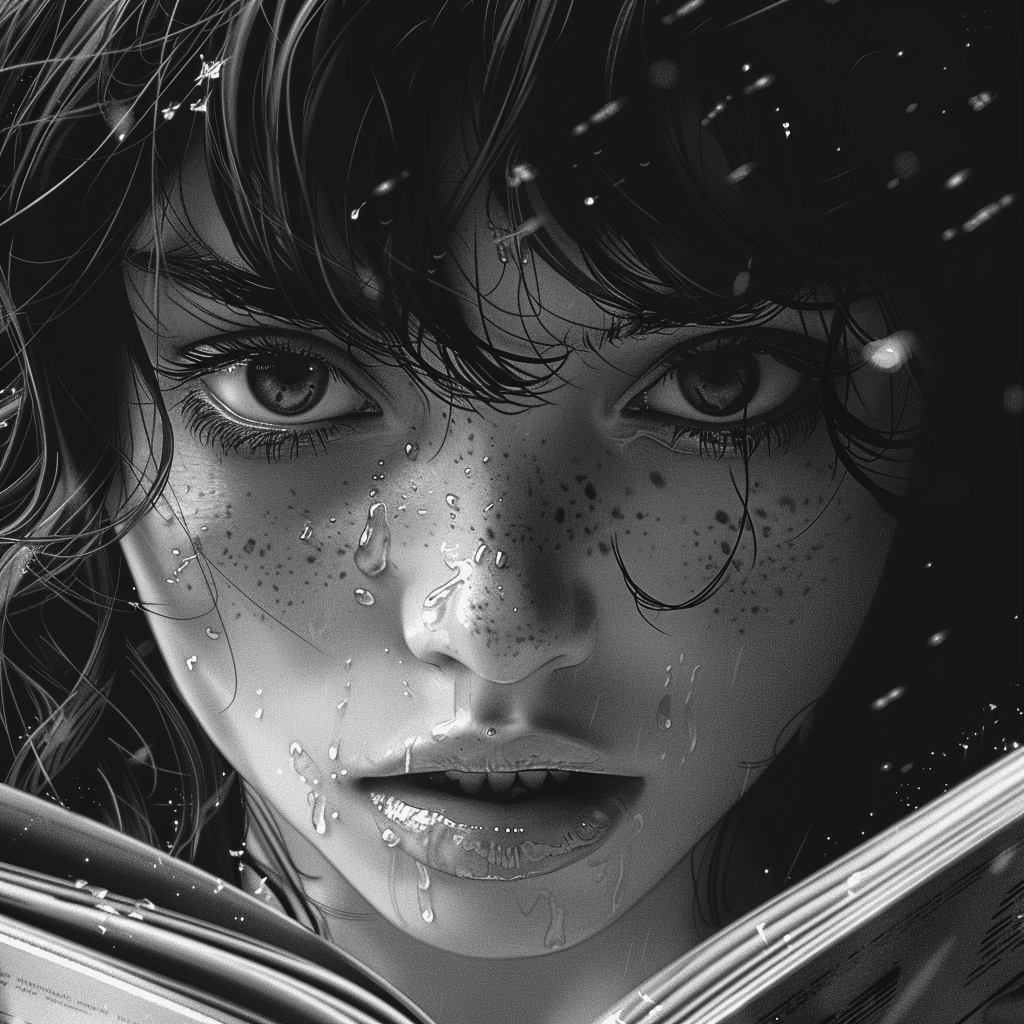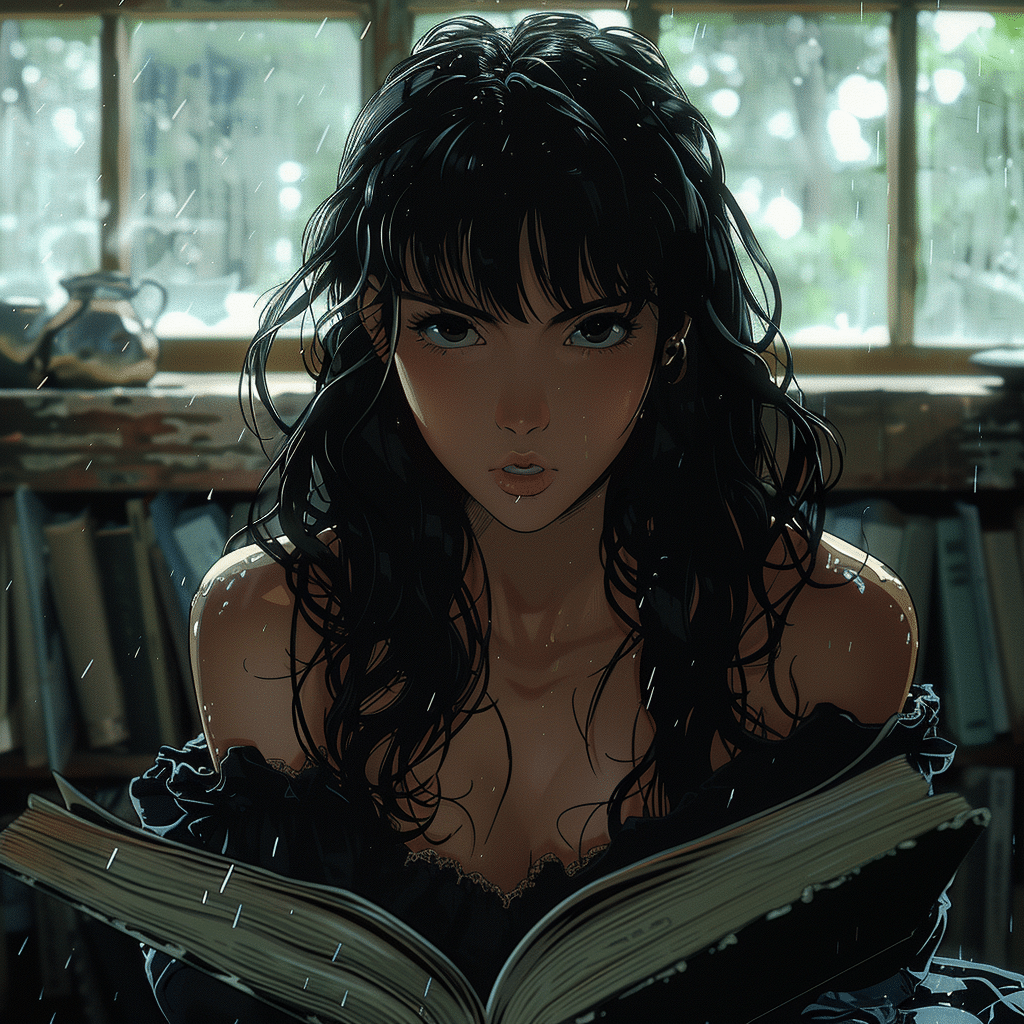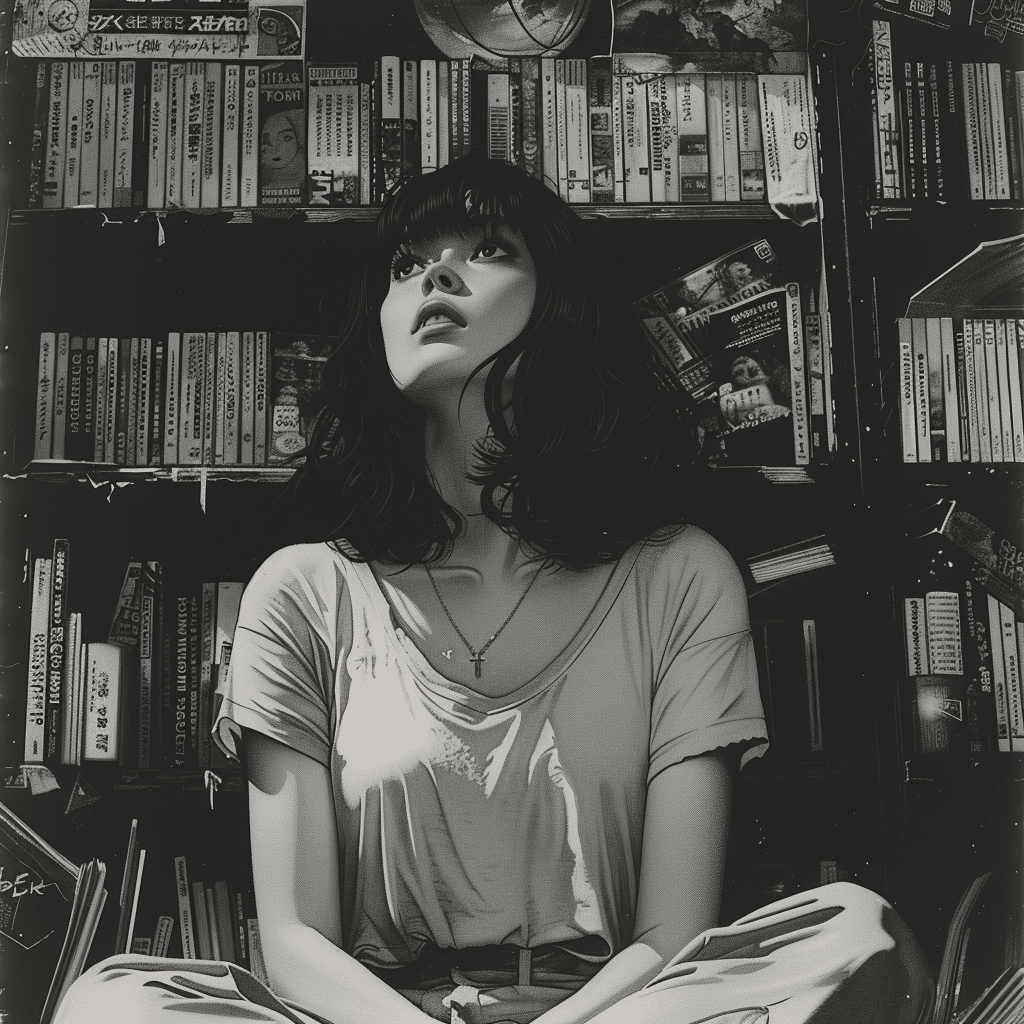Manga has exploded in popularity outside of Japan, becoming a global phenomenon that’s captured the hearts and imaginations of readers worldwide. For those unfamiliar, though, the immediate question pops up: how do you read manga? This simple query opens up a world of cultural nuances, evolutions of genre, and a revolution in digital media consumption. In this dive into the ink-stained pages of manga, we’ll unravel some astonishing facts about this beloved medium.
Unlocking the Basics: How Do You Read Manga?
Before we can jump into the heart-stopping action or the tear-jerking drama manga offers, we’ve gotta tackle the basics. Traditional Japanese manga demands readers to flip the script on their reading habits – literally. You start from the top right corner and work your way to the left and downwards, much like the flow of tategaki, Japan’s vertical writing. It can be a bit of a brain-bender for Western readers hooked on left-to-right text, but hey, isn’t a little challenge part of the fun?
Getting the hang of this reading style is like unlocking a secret level in a video game – it brings authenticity to your reading experience. If you try reading manga the western way, you’ll end up more confused than a chameleon in a bag of skittles. So remember, right to left, top to bottom – it’s your mantra for manga mastery. Let’s dive in:
It might take a hot minute to get used to it, but once you do, you’re in for a storytelling experience that’s as rich as a triple chocolate cake.

Anime Books vs. Manga Volumes: Understanding the Differences
Now, you may have stumbled upon anime books and wondered, are they the same as manga volumes? Well, dear reader, let me tell you – they’re as different as Laverne And Shirley cast members from The world according To Garp – related to entertainment, but each with a unique flavor.
First off, manga volumes are the ground zero of imagination, the source material that often offers more depth than a submarine in the Mariana Trench. Packed with intricate details and layers of character development, manga is where the magic begins.
On the flip side, anime books often contain images taken straight from anime episodes, splashed with narrative text to walk you through the story. While they’re cool in their own right, they’re sort of like getting the “highlight reel” of an anime. And sure, they can be fun, but if you want the full experience — the manga is where it’s at.
For evidence, look no further than series like “Attack on Titan” and “Fullmetal Alchemist.” These heavy-hitters have moments where the manga and anime are as different as night and day, with plot twists and endings that’ll have your jaw on the floor – assuming you’re reading the manga, of course.
| Aspect | Description | Tips/Notes |
|---|---|---|
| Reading Direction | Right to left, top to bottom | Mimics traditional Japanese writing (縦書き, tategaki). |
| Page Layout | Begin with the rightmost panel of the top row and proceed to the left | Look for the biggest panel in the top right as it often starts the page. |
| Panel Flow | Panels follow a Z-shaped pattern most of the time unless directional cues suggest otherwise | Follow speech bubbles and character’s line of sight for guidance. |
| Speech Bubbles | Read bubbles from right to left within a panel | Read bubbles closest to the character first if they are aligned vertically. |
| Sound Effects | Written in katakana or hiragana, read in the right-to-left format just like the text | Often mimics the sound it represents, known as onomatopoeia. |
| Cultural Note | Some terms, expressions, or concepts may not have direct English equivalents | Understanding cultural context can enhance reading experience. |
| Adaptations/Localization | Some publishers release ‘flipped’ versions, mirroring the pages to read left to right | Purists prefer the traditional layout but flipped versions can be beginner-friendly. |
| Translation Notes | Translators may include footnotes to explain cultural references or puns | Don’t skip these, as they provide a deeper understanding of the content. |
| Physical vs. Digital | Traditional manga is in print, but digital formats are also available, often in ‘traditional’ layout | Digital platforms may offer reading direction options. |
Discover the World of Manga Fox: A Digital Revolution in Reading Manga
Enter Manga Fox, our hero in the digital age of reading manga — a beacon of light in the quest for instant access to vast libraries of that sweet, sweet narrative nectar. This platform redefined the manga-reading game by offering convenience and a massive, ever-updating library at your fingertips.
What’s not to love? You’ve got:
Digital platforms like Manga Fox have nudged the manga industry – both sales and the breadth of available titles – to impressive new heights. There’s less worry about waiting for titles to be translated or hunting down elusive volumes at the bookstore. If you’re craving some manga action, just type and tap. It’s an age where read Manga free has become the mantra for throngs of fans.

The Sociocultural Impact of Reading Manga: From Niche to Mainstream
Once upon a time, manga was a niche hobby, whispered about in the secluded corners of comic book stores. But my dear mavericks, reading manga is now as commonplace as streaming the latest binge-worthy TV show. It’s leaped over cultural barriers, smashing the idea that it belonged solely to Japan.
Take a stroll down any bustling city street, and the signs are clear. You’ll see people rocking T-shirts with their favorite characters, overhear conversations about the latest manga craze, and even notice a spike in sushi and ramen joints. The Western love for manga hasn’t just welcomed Japanese narratives; it’s embraced and integrated aspects of Japanese culture into daily routines.
International readership stats are skyrocketing faster than space Godzilla, turning manga into a cross-cultural titan. This isn’t just a win for the readers – it’s a victory that’s echoing through the alleys of the entire entertainment industry.
The Evolution of Manga Genres Over Time
Manga has come a long way from its black-and-white days, growing into a vibrant metropolis of genres that cater to every flavor of fan out there. Look at Jjk Viz, and you get the pow-wow of genres blending supernatural elements with heavy-hitting action – a recipe for exhilaration.
We’ve got genres like:
But wait — there’s more. Niche genres like Isekai, whisking readers away to other worlds, or Yaoi, exploring the intricacies of male romance, are capturing hearts and minds in a major way. They’re not just small talk anymore; they’re full-blown conversations at the cool kids’ table.
Navigating The Legal and Ethical Aspects of Reading Manga
Hold your horses, though. As we revel in manga’s glory, it’s important to remember that supporting legal reading avenues ensures that manga creators can keep spinning their yarns. It’s the difference between making sure they’re enjoying the fruits of their labor or scraping by while piracy gnaws at the industry’s roots.
Piracy has indeed left its mark, blazing through the industry like a wildfire. But the response from Japan and the global market has been swift, stirring conversations about everything from Ozempic Vs Mounjaro to Connie Britton Movies. The point? When given importance, any subject, including the ethical consumption of manga, can spark substantial debate.
Serious fans who’ve delved deeper than the Mariana Trench into manga follow a sacred code – to read through avenues that circle back support to the creators. Industry professionals, creators, and consumers alike voice their perspectives on the matter; a chorus of opinions that shape the integrity of manga readership.
Fostering a Future of Manga Literacy
As we close the book on our exploration, let’s rewind and reflect on manga’s captivating journey. From its traditional roots laid down in the aesthetic gardens of Japanese culture to its blossoming in the digital epoch, manga has shown that its tales can enchant readers regardless of time and space.
Understanding how to read manga isn’t just about flipping pages the right way. It’s an invitation to commune with a diverse, vivid community — to share in gasps of shock, tears of sorrow, and laughter that echoes through halls. As technology gallops ahead and the industry balloons, manga’s future is as luminous as a supermoon.
The key to this future? Manga literacy, where fluency in its storytelling and an appreciation for its craft unfurl new horizons, connecting us across the cosmic web of culture and creativity. Now that’s a storyline worthy of the most epic manga yet to be written. Happy reading, manga maestros!
How Do You Read Manga? Uncover the Secrets!
So, you’re ready to dive into the expansive world of manga, eh? Oh boy, you’re in for a wild ride—just like finding the best sex Toys, uncovering the nuances of manga can bring a whole new level of excitement to your life. Let’s peel back the layers of this unique storytelling medium with some fun trivia and eye-opening facts. Hold onto your hats,cause some of these might just blow ’em right off!
The Right-to-Left Tango
First things first, let’s talk about direction. Reading manga is like doing a dance—specifically, the tango—but with your eyes. In Japan, the traditional reading order flips the western norm on its head, or rather, turns it right to left. That’s right; you start from what western readers see as the back of the book! It can be as disorienting as your first time finding your groove with the best sex toys,( but once you get the hang of it, it’s smooth sailing—or should I say, smooth reading?
Panels, Bubbles, and Whispers, Oh My!
Moving onto the layout, reading manga is all about navigating panels and speech bubbles. It’s a bit like connecting the dots, but instead of a picture, you end up with a fantastical story. While you’re zigzagging through the action, don’t forget to keep an eye out for those smaller, often itty-bitty, text bubbles—they’re like whispered secrets between characters, and you wouldn’t wanna miss the juicy details, right?
The Emotional Rollercoaster
Now here’s a kicker, the range of emotions you experience reading manga is akin to the highs and lows of browsing the best sex toys—thrilling,( surprising, and can leave you wide-eyed with amazement or blushing to the tips of your ears! The artists are maestros of expression, conveying depth with a simple quirk of an eyebrow or a stark shadow. Be prepared for feels you didn’t even know you had!
Cultural Nuggets Galore!
Heads up, culture vultures! Manga is more than just a comic book; it’s a treasure trove of cultural tidbits. From school festivals and cherry blossom viewing to the nitty-gritty of Japanese humor and societal norms, you’ll get an insider’s look without buying a plane ticket. It’s like getting secret access to the heart of Japan, and let’s be honest, who wouldn’t want that?
More Than Entertainment
Lastly, let’s talk impact. Manga isn’t just about passing the time. Nope, this medium can spark change, from driving fashion trends to inspiring new tech. It’s a cultural powerhouse, no less influential than, say, the world’s best sex toys,( which could revolutionize personal lives. Manga has that kind of power, shaping thoughts, attitudes, and even social movements!
Alright, manga rookies and veterans alike, that wraps up our trivia-tastic voyage into the question, ‘how do you read manga?’ Remember, jumping into manga is like splashing into a whole new ocean of storytelling. So, whip out your reading glasses, or not—you do you—and get ready to turn those pages (the other way around!). Happy reading, folks, and may your manga journey be as epic as the plots unfolding within those inky realms!

What is the correct way to read manga?
– Hold up, you’re about to dive into the world of manga! The correct way to read these Japanese gems is from right to left and top to bottom, just like the original tategaki style. So, flip that mindset and get ready to start on the right—literally!
How do you start reading manga?
– Ready to jump into manga? Easy-peasy – start at the back of the book since manga pages flip opposite from English reads. Then, tackle it panel by panel from right to left, top to bottom. Let the adventure begin!
Why is manga right to left?
– You might be scratching your head, wondering why manga’s gotta be different, reading right to left. It’s all thanks to Japan’s traditional writing system, tategaki, that had folks reading columns from the top down, right to left. Manga just stuck with the trend!
How do you read manga officially?
– To read manga “officially,” stick to the script—right to left, my friend. Start from what looks like the back of the book and work your way through the action and dialogue bubbles in the direction the samurai wrote.
Is reading manga good for you?
– Oh, you betcha, reading manga can be a total brain workout! You’re not only getting a juicy story but also learning about Japanese culture, sharpening your noggin’ with complex themes, and hey—it’s a blast!
Why does manga have no color?
– Ever wondered why manga’s usually in black and white? It’s all about tradition and practicality. Pumping out weekly manga leaves no time for coloring and keeps costs down—plus, there’s a certain charm in those inked lines, don’t you think?
What is anime for adults called?
– Anime for grown-ups gets the cool title “seinen” for the dudes and “josei” for the ladies. These genres pack a punch with more complex storylines and characters that ain’t just playing in the kiddie pool.
What is the difference between manga and anime?
– Let’s break it down: manga is the paper-and-ink comic book, while anime is its animated cousin. One you read, flipping through pages, and the other you watch—both delivering a knockout punch of Japanese storytelling!
What is the best manga to start with?
– Picking the best manga to start with is a bit like finding the perfect sushi roll—so many choices! But a classic like “Naruto” or “One Piece” will reel you in with epic tales and art that pops off the page.
Why is manga so expensive?
– Yikes, right? Manga can hit your wallet hard, but here’s the deal: they’re often imported, printed on quality paper, translated (no small feat!), and remember, those artists need to eat too!
What is a Korean manga called?
– Those manhwa from Korea are the distant cousins of Japanese manga, and they’ve got their own style. Manhwa’s often in full color and read from left to right—fancy that!
Why is it called manga?
– The word “manga” might sound like a tropical fruit, but it actually means “whimsical drawings” in Japanese. It goes way back to the days of block-printed art, long before your Wi-Fi connection!
Where can I get free manga?
– On the hunt for free manga? The internet’s got your back with legitimate sites offering a treasure trove of titles. Just remember, support the creators when you can, deal?
Do you read the manga before the anime?
– Manga or anime first? It’s like chicken and egg! Some say manga gives you the full story, straight from the source. But hey, go with whatever floats your boat—no judgment here!
How long does it take to read a manga?
– How long to read a manga? Like asking how long a piece of string is! It varies (yeah, duh!) from one volume during your coffee break to an epic saga that’ll take weeks. Settle in; it’s reading time!
Should I read manga vertically or horizontally?
– Manga’s a straight shooter—read those panels horizontally within the overall right-to-left flow. It’s a two-step tango that’ll have you waltzing through the pages in no time.
Where to start with manga?
– Where to start with manga? Behind every cover, there’s a new world waiting. Go for genres that tickle your fancy or dive into recommendations from friends who breathe that manga life.
Do you read manhwa right to left?
– Manhwa’s shaking things up—these Korean comics are read left to right, just like your usual English book. So, no head-spinning required when jumping into these vibrant reads!
How to not damage manga?
– Wanna keep your manga minty fresh? Handle with love—gentle page turns, no dog-earing, and please, for the love of collectors, keep those greasy snack fingers at bay!





















